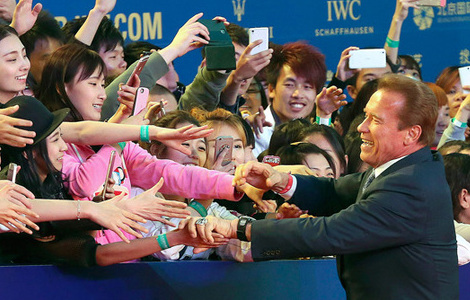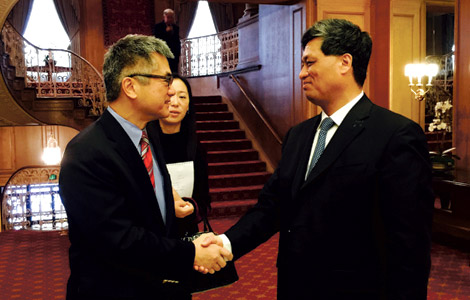China, Peru face challenges, opportunities in trade
Updated: 2015-04-18 16:10
(Xinhua)
|
||||||||
LIMA - China and Peru Thursday reiterated their mutual desire to secure the future of bilateral ties with clear goals at a forum marking five years of the free trade agreement (FTA) between the two countries.
Addressing the forum, held at the University of the Pacific, Chinese Ambassador Huang Minhui said "the current global situation is very important to the development of the economic, trade and cooperation ties between our two countries," highlighting challenges and opportunities ahead.
While the global outlook is less than encouraging, given the fluctuating prices in the international market, "both countries share a strong political will and amply agree on continuing to promote the FTA," the ambassador said.
The bilateral FTA between the two countries took effect in 2010. Since 2012, China has been Peru's main trading partner and the leading destination for Peru's total exports. In 2014, China also became its main supplier of capital goods and leading investor, with $18 billion.
Peru's Minister of Foreign Trade and Tourism, Magali Silva, said the government was working to diversify domestic production by boosting nontraditional exports, such as seaweed meal, giant squid, fruit and vegetables, to reduce its reliance on raw material exports.
As part of that push, Peru's nontraditional exports to China reached more than $467 million at the end of 2014, double that four years ago. The goal is to reach "$25 billion in 10 years," Silva said, and Peru is working with China on sanitary, phytosanitary and customs issues "to increase our products in that market."
The representative of the Association of Peru's Agrarian Products Unions (AGAP), Ana Deusta, said among the challenges facing the South American country was increasing its agricultural and fisheries production, and seeking new options in a market such as China, where the demand for foodstuffs is growing steadily.
Economist Fernando Gonzales-Vigil said FTAs such as the one signed between Peru and China are fulfilling the objective of diversifying domestic production and providing added value.
He said the positive aspect of the bilateral relationship was that it had built a strategic partnership, whose strength was consolidating not just trade, but also investment exchange, through the presence of China's ICBC in the country, one of the five largest banks in the world.
Former Deputy Minister of Foreign Trade and Tourism and manager of FTAs, Pablo de la Flor, noted that the Peru-China agreement initially sparked concern at home, mainly because of the disparate size of their economies.
However, as the agreement was founded on "mutual and complementary interests," it has developed at a "balanced pace" and should continue to do so in the future.

 Beijing film festival draws top moviemakers, Oscar winners
Beijing film festival draws top moviemakers, Oscar winners
 Across America over the week (from April 10 to 16)
Across America over the week (from April 10 to 16)
 Historic hotels offer more than a view
Historic hotels offer more than a view
 Top 10 foreign holders of US Treasuries
Top 10 foreign holders of US Treasuries
 Lost in sandstorms
Lost in sandstorms
 New roles for technology: Rise of robots
New roles for technology: Rise of robots
 Strange but true: Getting ahead of the rest
Strange but true: Getting ahead of the rest
 Top 10 industries with most job-hoppers
Top 10 industries with most job-hoppers
Most Viewed
Editor's Picks

|

|

|

|

|

|
Today's Top News
China and the 2016
US election
World Bank, IMF: will work
with AIIB
Ex-PM says US, China can be allies
Hainan Air links San Jose, Beijing
Carrying on a Chinese food legacy
America, Europe told to work with BRICS
Beijing film festival draws top moviemakers, Oscar winners
Chinese teachers mark progress
US Weekly

|

|






